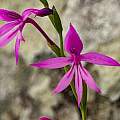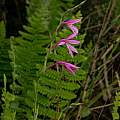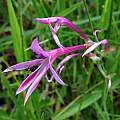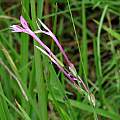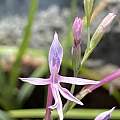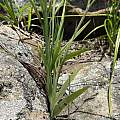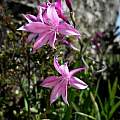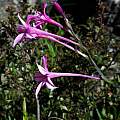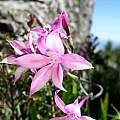Radinosiphon is a deciduous cormous genus in the Iridaceae family with 2 species found from Mpumalanga Province, South Africa and Eswatini up through southern Tanzania. Corm tunics are papery becoming fibrous and the stem is well developed and angled. Flowers are long-lived, salver-shaped, pink to light purple. It is in the Croceae tribe.
Radinosiphon leptostachya (Baker) N.E.Br. is found in quartzite outcrops and crevices in montane grassland, 1000 to 2,000 m elevation from Eswatini to Mpumalanga Province, South Africa and northwards to east tropical Africa. It has small flowers (perianth tube 15 to 30 mm long) and almost linear lower tepals. The small capsules contain just one or two seeds per locule. It increases vegetatively through the development of thick, scaly rhizomes. It flowers January to March. Height: to about 50 cm. Photos from iNaturalist were taken by Bart Wursten in Zimbabwe in December, by Kate Braun in Eswatini in February and by Simon Attwood in late November in Mpumalanga and shared under CC BY-NC licenses.
Radinosiphon lomatensis (N.E.Br.) N.E.Br. is a local endemic restricted to the highlands above 300 m elevation in northern Eswatini and the mountains west of Lydenburg, South Africa where it grows in quartzite outcrops in montane grassland. This is the larger-flowered taxon: perianth tube mostly 30-50 mm long with long, broader tepals. It has larger capsules with up to 8 seeds per locule and increases vegetatively by slender, naked stolons. It flowers January to February and is pollinated by the long-proboscid fly. Height range: 10-50 cm. Photos from iNaturalist were taken by Craig Peter in Mpumalanga in January and shared under a CC BY-NC license.
